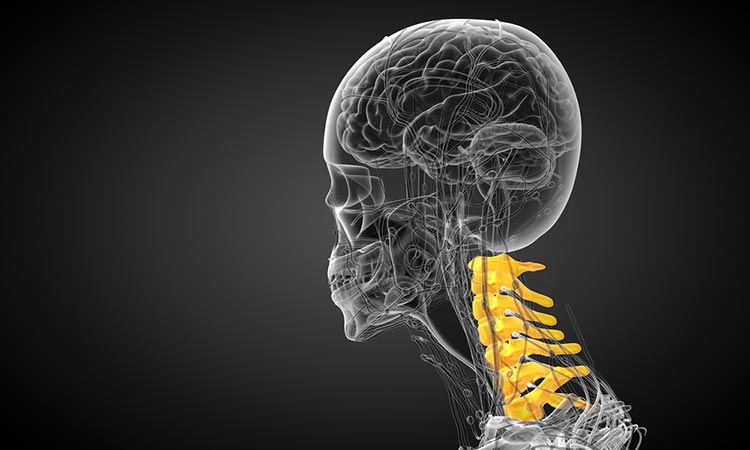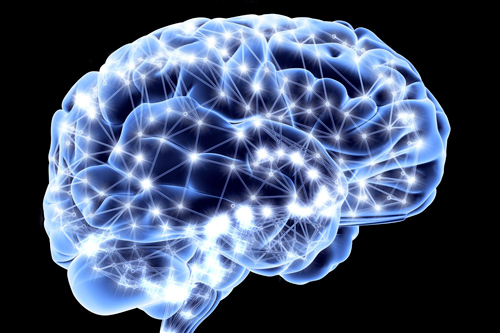
Your ability to stay balanced is a complicated process involving your sense of orientation in space, sensory information that sends signals to neurons, and muscular responses that adjust to keep you upright. On a perfect day, all of these systems work in tandem to allow you to run after a bus, do yoga, and Rollerblade without falling over. For some people, however, maintaining a sense of stability is a challenge.
Take Cheryl Schiltz, for example. In the first chapter of his book, The Brain That Changes Itself: Stories of Personal Triumph from the Frontiers of Brain Science, Dr. Norman Doidge shares Schiltz’s story. Originally an international sales representative, Schiltz lost her ability to balance after a surgery when her vestibular apparatus (the balance system’s sensory organ) was destroyed as a side effect of medication. Suddenly, this highly accomplished and professional woman found herself unable to work, much less stand, walk, or even sit up without falling over. She explained to Doidge, “There have been times when I literally lose the sense of the feeling of the floor… And an imaginary trapdoor opens up and swallows me.” For Schiltz to regain her sense of balance, scientists used technological equipment to help her brain learn to bypass the broken link between her vestibular apparatus and her visual system.
Schiltz’s experience may be on the far end of the spectrum, but it highlights how debilitating a lack of balance can be, plus the need for a deeper understanding of this ability we often take for granted. From spinal cord injuries to other conditions that impair balance, the more we understand how the brain orients itself in space and coordinates body movements to easily adjust to changes, the more those who suffer disrupted balance function might find relief. New research published in Cell gives insight into how your brain perceives sensory information and turns it into action. Interestingly, it’s not all done in your brain itself.
Your Spinal Cord Has a Mini-Brain
While Schiltz’s problems resided in her damaged vestibular apparatus (located in the brain), your ability to balance doesn’t rest solely there. Scientists have long understood that your brain coordinates a lot of information to help you remain upright: visual signals combine with auditory sensors, while signals from arms and legs help everything get in sync. Scientists have believed that light touch sensors send signals that are processed via neural circuits in the spinal cord, but they didn’t know exactly how.
Calling their finding a “mini-brain in the spine,” scientists recently mapped a collection of neurons in the spine that process sensory information. Led by Martyn Goulding, professor at the Salk Institute, a research team decided to examine how the body processes light touch. Specifically, they wanted to understand how sensors in the feet detect changes in the surface underfoot and elicit a response from the body.
To explore the central question of how the brain creates sensory perceptions and translates them into actions, Goulding and his team used advanced imaging systems to track nerve fibers carrying sensory signals from the feet of mice to the spinal cord. The outcome: They discovered that those fibers connected to a group of RORα neurons that also connect with the brain’s motor region. Plus, the RORα neurons connect with neurons on the ventral spinal cord, a cluster that controls movement. This is where the “mini-brain” concept comes in: RORα neurons are at the core of neurons in the spinal cord that integrate signals from the brain with sensory signals that translate into movement in extremities.
When the mice were genetically modified to disable the RORα neurons, the mice experienced a loss of sensitivity in their skin. While they were still able to keep their balance on flat ground, they became clumsy when led to walk across a narrow beam, far underperforming the control mice. These results led scientists to believe that the reduced capability of the mice to keep their balance correlates to the reduced ability to sense when their feet were slipping off the beam. Extrapolating this detail, researchers suspect this issue also relates to maintaining balance on, for example, slippery surfaces.
In a statement released by the Salk Institute, Goulding explains that previously “[i]t was unclear how… touch information was merged with other sensory information to control movement and posture.” This research offers an explanation of how the spinal cord encodes and processes signals.
Furthermore, explains one of Goulding’s postdoctoral researchers, Steve Bourane, “We think these neurons are responsible for combining all of this information to tell the feet how to move.”
For people who have impaired motor skills, balance issues, and even the elderly, this is exciting news. Basic fundamental principles of neuroplasticity (the brain’s ability to change and adapt) suggest the brain’s pliability and natural healing tendencies. In Schiltz’s case, a team of scientists who deeply understood the network of visual cues and vestibular functioning designed advanced technology that helped her brain redevelop vestibular sense. Today Schiltz stands, sits, walks, and even travels without the aid of the original technology. With the results of Goulding and his team’s findings, future patients with spinal cord injuries and impaired balance conditions—especially those specific to signal processing in the spine—might find quicker and more robust symptom relief as this research further illuminates the complex balance system and opens new opportunities for creative repair.
Click here to get inspired by Rose’s easy steps to positively change your mind


